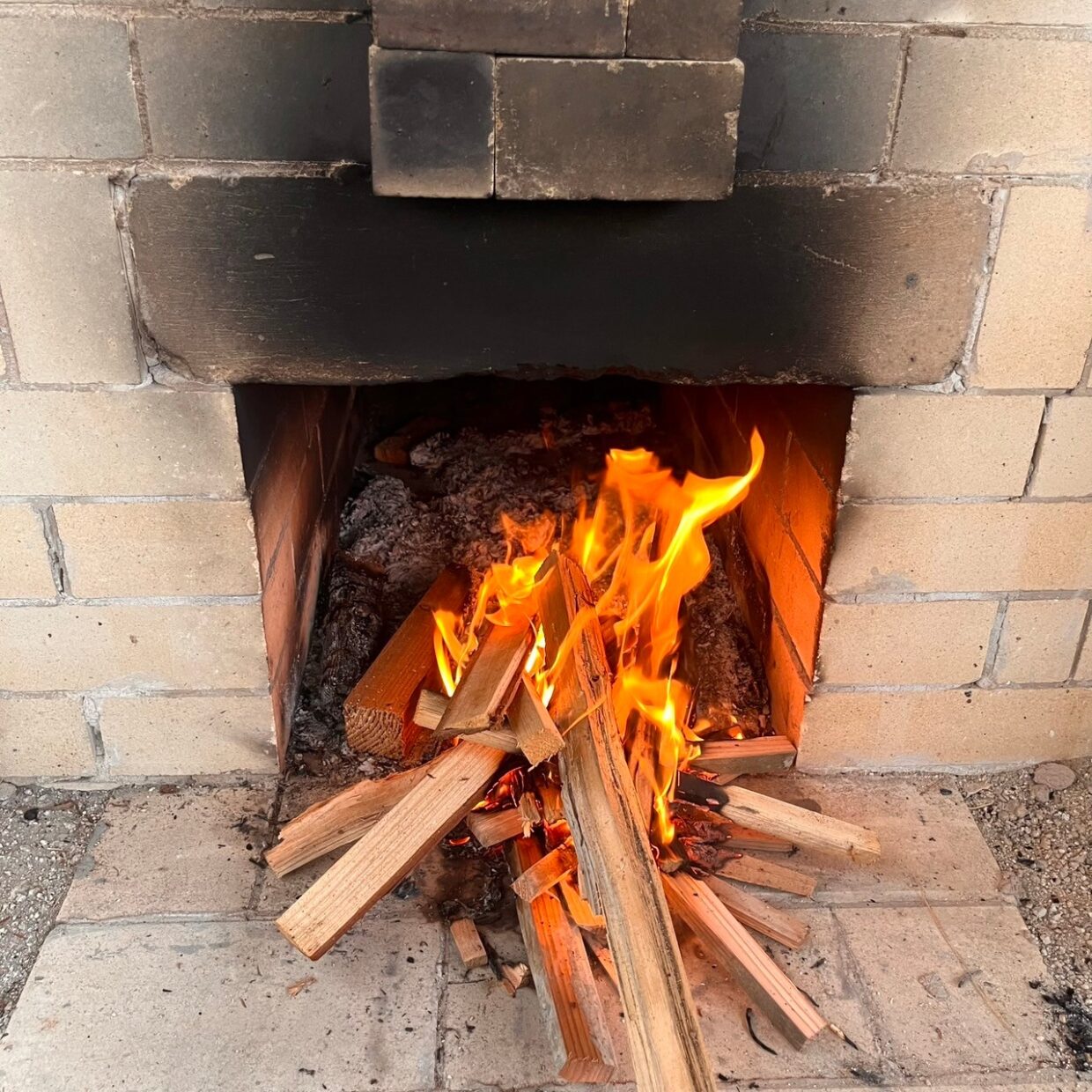
A world of profound beauty created by natural glazes and Yakishime
What is natural glaze?
Definition and characteristics of natural glaze
Natural glaze refers to the glaze that is formed naturally on the surface of pottery when natural materials such as firewood and ash melt during firing. Unlike glazes applied artificially, this glaze is formed by chance through the power of nature, creating beautiful patterns that are very unique and no two pieces are the same. Furthermore, natural glazes generally have a gloss similar to that of Vidro, and are characterized by a lustrous texture. For this reason, pottery using natural glazes is highly valued for its uniqueness and natural beauty.
History and origin of natural glazes
Natural glazes have a very long history and play an especially important role in Japanese pottery. With the development of Shigaraki ware, pottery using natural glazes began to be made in the Kamakura period. Shigaraki ware in particular is characterized by its unique fire color (scarlet) obtained by firing in a wood-fired kiln, and the flavor of the vidro glaze and scorched natural glaze. This made it beloved by tea masters, and its value increased with the rise of the tea ceremony. Shigaraki ware’s natural glaze has a taste of “wabi-sabi” created by the combination of earth and fire, and symbolizes the aesthetics of tea ceremony culture.
The process of creating natural glaze
The process of creating natural glazes is based on a phenomenon that occurs naturally when pottery is fired at high temperatures. Specifically, firewood and ash melt inside the kiln due to the high temperature, and the glaze is formed when they adhere to and penetrate the surface of the pottery. In particular, kilns such as climbing kilns and anagama kilns are used to produce Shigaraki ware, and long periods of high-temperature firing accentuate the brightness of the surface of the pottery, while creating the texture of the vidro glaze and scorched marks. This process ensures that no two pieces are the same, and each piece has its own unique charm. The quality of the Shigaraki clay also plays an important role in the formation of natural glazes, and beautiful natural glazes are created by using clay that contains a lot of silica and feldspar.
The technique of Yakishime
The basic process of Yakishime
Yakishime (high-fired unglazed) is a pottery technique in which the pottery is fired at high temperatures without the use of glaze. This process brings out the characteristics of the pottery itself to the fullest, creating a unique texture. First, the clay is shaped and dried. The shaped pottery is then fired at high temperatures of over 1200 degrees in a wood-fired or gas kiln. Shigaraki ware in particular uses this type of yakishime technique, which allows the clay particles to blend together and naturally reveal the unique fire color and Vidro glaze.
The relationship between high-temperature firing and unglazed pottery
High-temperature firing is an important process in bringing out the characteristics of the yakishime. Because the ware is fired without glaze, the chemical composition of the base material itself and the changes that occur in the kiln determine the appearance of the pottery. For example, when firing Shigaraki ware, the ash that falls in the kiln dissolves into the base material and forms a natural glaze. In addition, long-term high-temperature firing gives the base material a delicate fire color (scarlet) and creates the texture of a vidro glaze or charred finish. This relationship results in a product that is simple yet has a deep texture that can be enjoyed.
The aesthetic features and appeal of Yakishime
The aesthetic characteristic of Yakishime is its simplicity yet profound beauty. The lack of glaze allows the texture and color of the clay itself to stand out, resulting in a unique feel and appearance. Shigaraki ware in particular is often fired in climbing kilns or anagama kilns, which creates a natural glaze that beautifully blends with the flavors of the vidro glaze and scorched earthenware. Another appealing feature of Yakishime is that the porous base is water-absorbent, so the color changes when it absorbs water, and the texture improves the more it is used. These characteristics make it a valuable tea utensil, beloved by tea masters.
Similarities and differences between natural glaze and Yakishime
The common aesthetics of natural glaze and Yakishime
The common aesthetic of both natural glaze and yakishime is their simplicity and unique beauty that comes from the power of nature. Both techniques do not use glazes and are fired at high temperatures, taking advantage of the characteristics of the clay itself, so the natural texture that results from the lack of chemical adjustments is what makes them so appealing. In particular, Shigaraki ware stands out for its unique fire color (scarlet) and the beauty of the Vidro glaze, which is deeply connected to the aesthetics of “wabi-sabi.”
Diverse expressions born from different techniques
While natural glaze and yakishime share a common aesthetic, each technique allows for a variety of expressions. Natural glaze is a glaze that is formed naturally when ash from firewood falls on the pottery in the kiln and is fired at high temperatures for a long time. The beautiful Vidro color that is created by this process gives the pottery a unique look. On the other hand, yakishime does not use any glaze at all, and the base itself is porous, allowing the texture and color of the clay to show through in the piece as it is. For this reason, the subtle color tone and texture of the clay are appreciated as beautiful in yakishime.
For example, Shigaraki ware can have a variety of colors, such as reddish brown and blackish brown, depending on the firing process. Bizen ware and other wares also have unique colors that change during firing, and a deep texture that cannot be obtained with a simple glaze.
Representative natural glaze and Yakishime artists and their works
The relationship between Shigaraki ware and natural glazes
Shigaraki ware is a traditional pottery that originated in the Kamakura period and originates from Shigaraki town. The soil in this area is of high quality and contains a lot of silica and feldspar, which results in pottery with a unique rough surface. Shigaraki ware is characterized by unglazed pottery that is fired without the use of glaze, and is attractive for its fire color (scarlet) obtained by firing in a wood-fired kiln and the texture of the natural glaze, Vidro glaze, and scorched.
As the tea ceremony flourished, Shigaraki ware became beloved by tea masters and spread widely. Its appeal is its “wabi-sabi” aesthetic, and it is valued as an art woven by earth and fire. Shigaraki ware is made using high-temperature firing, which accentuates the brightness of the surface of the pottery and brings out the texture of the Vidro glaze and scorch marks. As one of the Six Ancient Kilns, it continues to preserve the traditions that date back to the Azuchi-Momoyama period.
Contemporary Artists of Natural Glaze and Yakishime
Even today, there are many artists who pursue the techniques of natural glaze and firing, and their works are highly acclaimed both in Japan and abroad. For example, there are artists who create works that incorporate a modern sensibility while inheriting the traditions of Shigaraki ware. They preserve the techniques from ancient times while incorporating new ideas and pursuing their own unique expressions.
Contemporary pottery artists who specialize in the Yakishime technique focus on bringing out the beauty of the ash that falls on the pottery in the kiln and the natural glaze that is created by long, high-temperature firing. The works of these artists are simple yet profound, capturing the hearts of those who see them.
In addition, Yakishime pottery artists from other regions, such as Bizen ware and Tamba ware, also express unique textures and beauty using high-temperature firing and unglazed techniques. Their works are highly regarded not only as tableware but also as works of art and interior decoration, and they widely convey the appeal of Yakishime.
To enjoy the beauty of natural glazes and firing
Appreciation points and tips
There are a few points and tips to appreciate natural glaze and fired works. First of all, the appeal of natural glaze works, such as Shigaraki ware, lies in their natural texture and color. It is important to carefully observe the characteristics of the vidro glaze and scorching that appear on the surface of the work. Each one has its own unique and one-of-a-kind expression, such as color variations and unevenness in the glaze. In particular, when you look at how the unique fire color (scarlet) of Shigaraki ware is expressed in the work, you can feel the richness of the firing process.
Also, since glazes are not used for Yakishime works, the texture of the clay itself is important. Take a close look at the flavor of the porous base and the change in color caused by kiln firing. It would be interesting to compare it with other Yakishime works, such as Bizen ware. Furthermore, if you are able to touch it, we recommend checking the texture. The roughness and smoothness of the clay will highlight the individuality of the work.
Important points to note when purchasing
There are a few things to keep in mind when purchasing natural glaze and yakishime pieces. First, it is important to buy from a reliable artist or kiln to guarantee the quality of the piece. For Shigaraki ware, it is best to choose a traditional Shigaraki town kiln or a piece by a famous artist.
Next, check the condition of the piece. In particular, in the case of natural glazes, unevenness in the glaze and scorched marks are appreciated as unique charms, so make sure that these characteristics match your preferences. In the case of fired pieces, the texture and color of the clay are also deciding factors for your purchase, so be sure to look at them carefully.
Finally, please consider not only the art but also the practicality of everyday use. Yakishime tableware is porous and can enhance the quality of food, but it is highly absorbent and requires careful handling. Please enjoy the beautiful world of natural glazes and yakishime while keeping these points in mind.

leave a comment